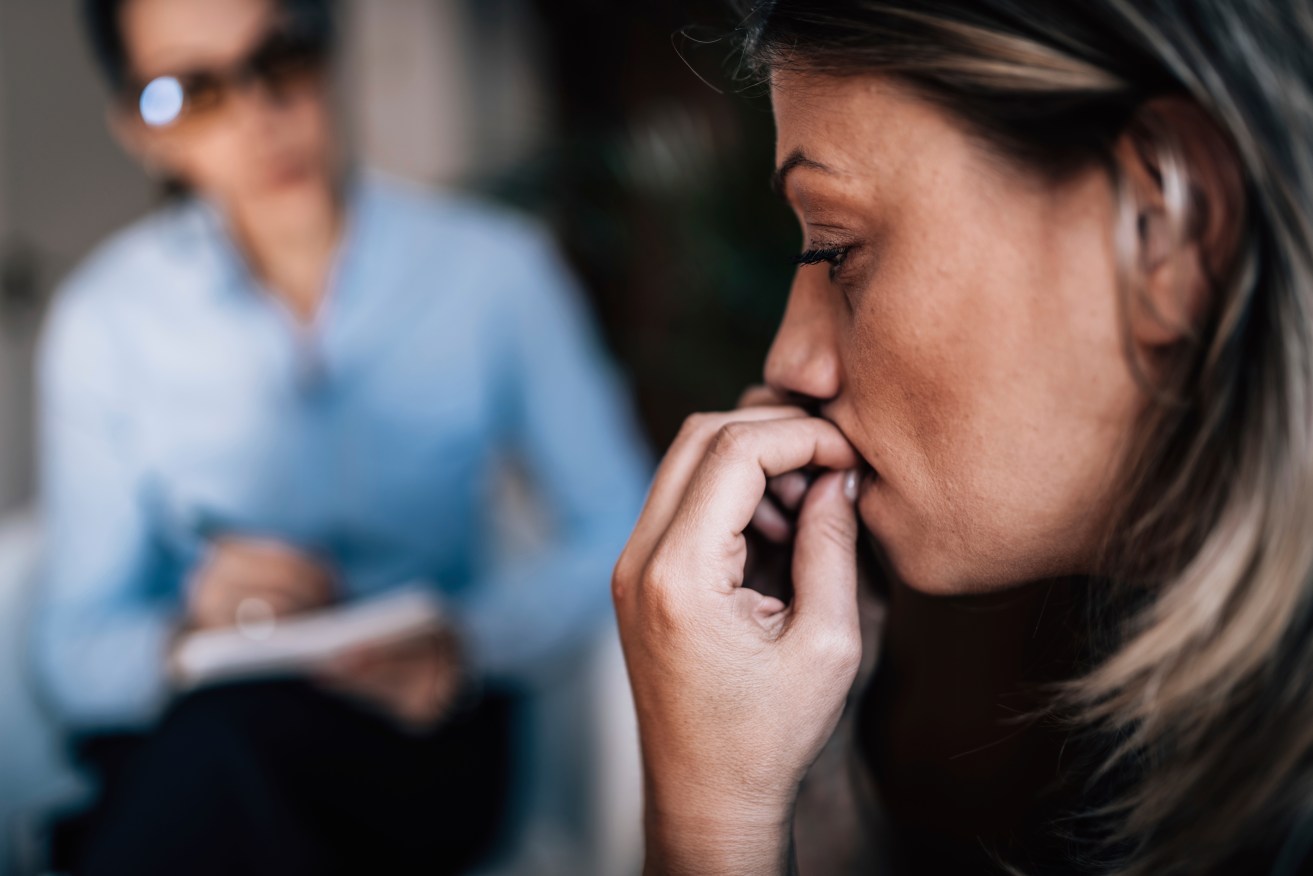Insomniac? Get on the (therapist’s) couch


Mental health experts say it is important to address your feelings after a tragic incident. Photo: Getty
A popular way to wind down – ahead of going to sleep – is with a relaxation routine.
You start off with a few calming gentle breaths. In, out, in, out.
Then begin tensing groups of muscles one at a time as you breathe. Start with the muscles in your feet and slowly work upward. The ankles, the calves, the knees, etc.
Hold the tension as you inhale, then release it as you exhale. Take a few breaths as you notice how relaxed each muscle group feels.
Sounds good, right?
Probably feels good, too. But does it work to get you off to sleep? Or does it work against it – especially as an intervention against chronic anxiety? We’ll get back to that.
Relaxation routines are a common component of cognitive behavioural therapy for insomnia (CBT-i), a form of talk therapy.
It may surprise you, but in Australia, the US and Europe, CBT-i is the first-line treatment for chronic insomnia.
This puts mental health considerations front and centre when developing a personalised response to insomnia.
And for good reason
People with insomnia are twice as likely to develop depression as people who don’t have sleep disorders.
Further, poor sleep can trigger mania, psychosis or paranoia, or make existing symptoms worse.
Hence, assessing insomnia through a psychological lens makes sense.
Also, CBT-i serves as a safer and more effective alternative to medication. Although, some patients are prescribed both CBT-i and drugs.
Which is all good
But CBT-i is a psychological treatment with multiple components. Do they all work well? Or do some work better than others?
New research, led by the Department of Neuropsychiatry, University of Tokyo Hospital, has analysed 241 studies, involving over 30,000 adults, and identified the most beneficial components of CBT-i.
One surprising finding was that relaxation routines may be counterproductive, in part because they might interfere with more successful and important components.
Lead author of the study is Yuki Furukawa, a medical doctor.
In an email he explained: “Relaxation techniques, such as breathing or progressive muscle relaxation, are frequently included in the CBT-I packages. However, our component network meta-analysis suggested that they might be counterproductive, meaning that including such techniques could end up in decreasing the likelihood of remission.”
He said that in the treatment of insomnia, “limiting time lying awake seems to be crucial. Relaxation might lead to lying longer while awake, which might counter sleep restriction or stimulus control”.
Sleep restriction? Stimulus control?
This brings us to the CBT-i components that were found to work well.
Overall, a combination of cognitive and behavioural strategies, ideally delivered in person by a therapist, was found to maximise the benefits of cognitive behavioural therapy for insomnia (CBT-i).
The strategies include:
- Cognitive restructuring – used to identify, challenge, and alter the thoughts and beliefs that contribute to insomnia. The goal is to replace stress-producing thoughts (cognitive distortions) with more balanced thoughts that do not interfere with sleep.
- Sleep restriction – is designed to eliminate prolonged middle of the night awakenings. It doesn’t aim to restrict actual sleep time but rather to initially restrict the time spent in bed. Subsequent steps consist of gradually increasing the time spent in bed. See here to learn more.
- Stimulus control – people with insomnia can associate bedtime with frustration, dread, and even fear. Going to sleep develops a negative association for them over time. Stimulus control therapy is designed to help individuals suffering from insomnia to strengthen the bed and bedroom as cues for sleep, to weaken the bed and bedroom as cues for arousal, and to develop a consistent sleep–wake schedule to help maintain improvement.
- Third-wave components – third-wave behaviour therapies focus on issues such as acceptance and commitment, and mindfulness-based interventions.
- In-person delivery – some useful CBT-i apps and online programs have proved helpful for some people. But the researchers found that seeing a psychologist in person is more effective. This is probably because the cognitive restructuring (replacing unhealthy thoughts and behaviours with healthy ones) involves a deeper dive into these issues.
Dr Furukawa and his colleagues expected to find behavioural components such as sleep restriction and stimulus control were effective against insomnia.
But they were surprised to find that cognitive components, such as cognitive restructuring and third-wave components, were also effective.
One exciting prospect, as the authors note, is that their findings “may lead to personalised treatments for insomnia by matching individuals’ insomnia characteristics with appropriate techniques”.








